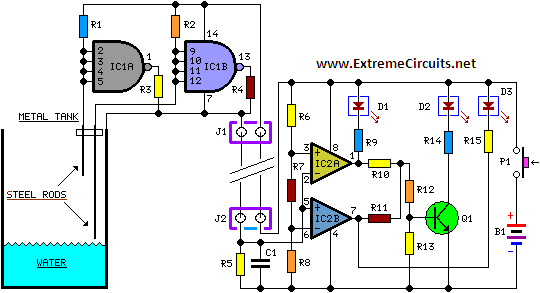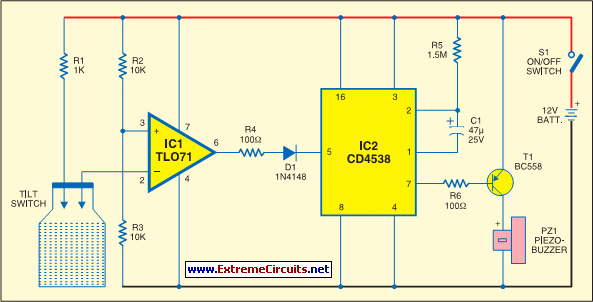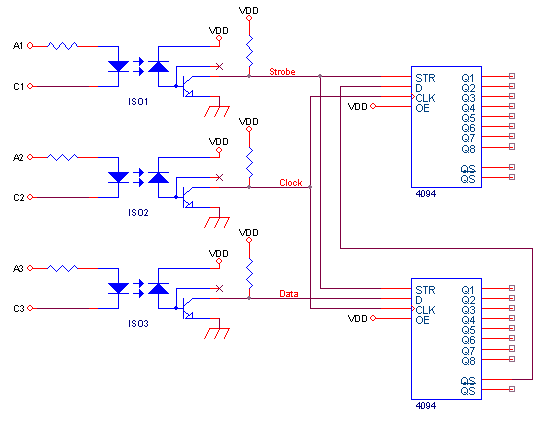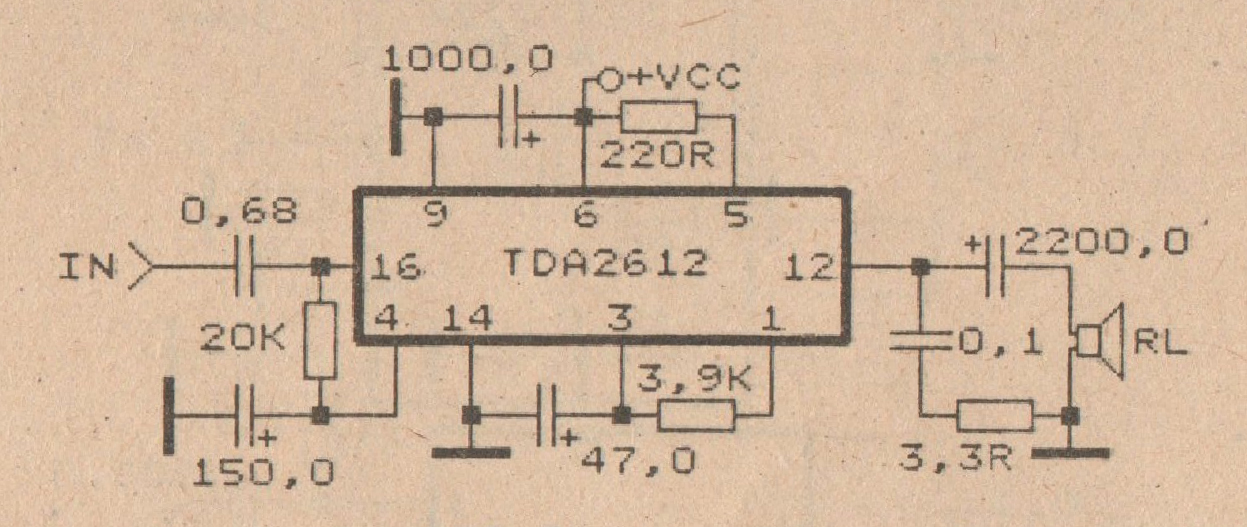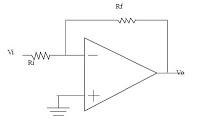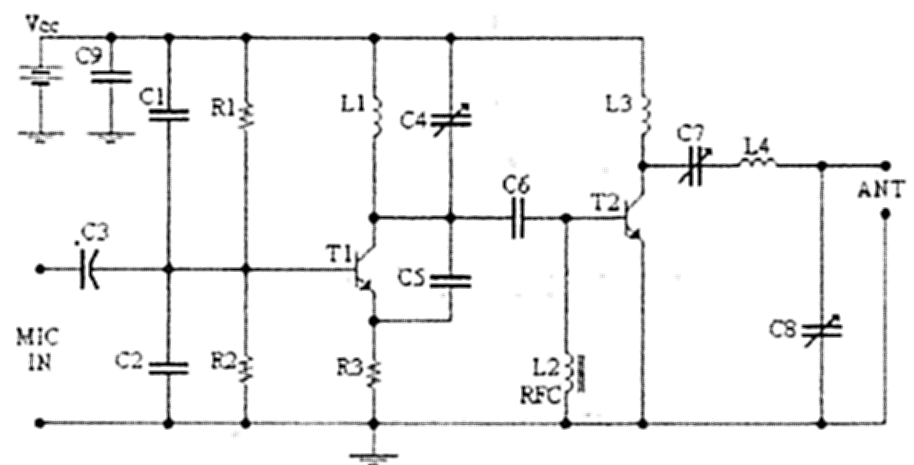
DC to DC converter electronic schematic
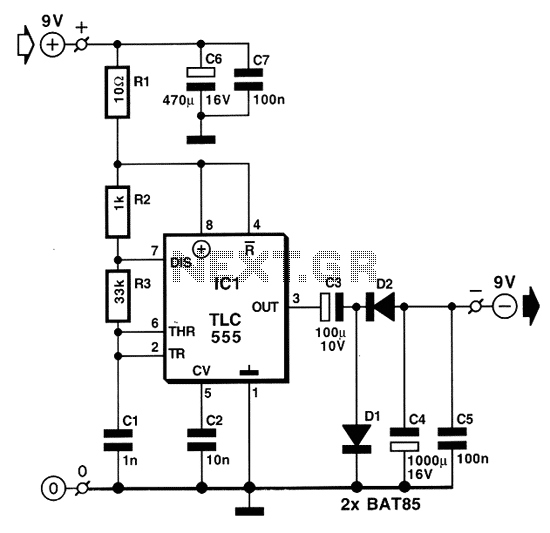
Individuals who frequently utilize battery-operated devices or require a negative voltage from a single positive source will find the following converter beneficial. This circuit can convert a 9 V positive battery voltage to a negative voltage using the well-known integrated circuit 555. It can also be employed in applications that necessitate two symmetrical power lines from a single battery. The TLC555, a CMOS version of the traditional NE555, is recommended, although the 7555 can also be used if the TLC555 is unavailable. In this configuration, the TLC555 is set up in an astable mode. The oscillation frequency is determined by resistors A2, A3, and capacitor C1, targeting approximately 20 kHz. The oscillator generates a rectangular waveform with a duty cycle close to 50%. This waveform is fed into a voltage doubler rectifier circuit composed of capacitors C3, C4 and diodes O1 and O2. Schottky diodes, specifically VAT85, should be used for O1 and O2 due to their low forward voltage drop of approximately 0.4 V, as opposed to silicon diodes like the 1N4148, which have a forward voltage drop of around 0.7 V. Capacitor C4 smooths the rectified voltage, while capacitor C5 filters out high-frequency noise. The disconnection of the supply voltage to the timer is managed by A1, C6, and C7. The inverter's power consumption is primarily influenced by the load connected to the -9 V output. The output voltage remains within acceptable limits as long as the load current does not exceed 10 mA. To facilitate integration of the inverter into various electronic devices, it is advisable to construct a compact PCB.
The described circuit utilizes the TLC555 or 7555 timer IC in an astable configuration to generate a square wave signal. This signal oscillates at approximately 20 kHz, which is suitable for the intended application of voltage conversion. The frequency is determined by the resistors A2 and A3 and capacitor C1, which set the timing characteristics of the oscillator.
The generated square wave is then directed to a voltage doubler rectifier circuit. This circuit consists of two Schottky diodes (O1 and O2) and capacitors C3 and C4. Schottky diodes are preferred due to their lower forward voltage drop, which enhances efficiency in voltage conversion. The use of capacitors C3 and C4 is critical; C3 charges to the peak voltage of the waveform, while C4 serves to smooth the output voltage, providing a stable -9 V output.
Capacitor C5 acts as a high-frequency noise filter, ensuring that the output voltage is clean and stable. The role of A1, along with capacitors C6 and C7, is to manage the power supply to the timer, preventing unnecessary power draw when the circuit is not in use.
The overall design emphasizes efficiency and compactness, making it suitable for integration into various electronic devices. The PCB layout should consider the proximity of components to minimize parasitic inductance and capacitance, which could affect performance. The circuit is designed to maintain a stable output voltage under a maximum load current of 10 mA, making it suitable for low-power applications requiring a negative voltage.Those of you who frequently use devices that work on battery or you need a negative trend at the moment you have a single positive, will definitely look for a converter like the one described below. Constructing it, you can convert a positive voltage of a battery of 9 V to negative using well known integrated 555.
The same circuit can also be used in cases those requiring two symmetrical lines of power, when available a single battery. The integrated TLC555 is the old bipolar NE555, manufactured with technology but CMOS. Unless you have this type of integrated, you might as well use an 7555. In this construction, the TLC555 is syndesmologimeno arranged in a ground unstable. The oscillation frequency determined by the A2, A3, C 1 and approaching 20 kHz. The rectangular waveform produced by the oscillator is therefore time to time (Duty Cycle) close to 50%. The waveform is led to a rectifier Doubler formed by C3, O1, O2 and C4. In place of O1 and O2 should be placed diodes Schottky type VAT85 due to low voltage correct direction which is equal to 0,4 V (silicon diodes such as type 1 N4148, show a tendency equal to 0,7 V).
The capacitor C4 cares for smoothing the voltage bristled, while the C5 relieve the signal from noise high frequencies. With the help of A1, C6 and C7 achieved the disconnection of supply voltage timer. The consumption of the inverter to power depends largely on the load to be connected to the output of -9 V.
As seen from the values ??indicated in the table, the output voltage is held within tolerable levels, as the load current is kept less than 1O mA. To make it easy to integrate the inverter into any electronic device, I suggest you build a small PCB board.
The described circuit utilizes the TLC555 or 7555 timer IC in an astable configuration to generate a square wave signal. This signal oscillates at approximately 20 kHz, which is suitable for the intended application of voltage conversion. The frequency is determined by the resistors A2 and A3 and capacitor C1, which set the timing characteristics of the oscillator.
The generated square wave is then directed to a voltage doubler rectifier circuit. This circuit consists of two Schottky diodes (O1 and O2) and capacitors C3 and C4. Schottky diodes are preferred due to their lower forward voltage drop, which enhances efficiency in voltage conversion. The use of capacitors C3 and C4 is critical; C3 charges to the peak voltage of the waveform, while C4 serves to smooth the output voltage, providing a stable -9 V output.
Capacitor C5 acts as a high-frequency noise filter, ensuring that the output voltage is clean and stable. The role of A1, along with capacitors C6 and C7, is to manage the power supply to the timer, preventing unnecessary power draw when the circuit is not in use.
The overall design emphasizes efficiency and compactness, making it suitable for integration into various electronic devices. The PCB layout should consider the proximity of components to minimize parasitic inductance and capacitance, which could affect performance. The circuit is designed to maintain a stable output voltage under a maximum load current of 10 mA, making it suitable for low-power applications requiring a negative voltage.Those of you who frequently use devices that work on battery or you need a negative trend at the moment you have a single positive, will definitely look for a converter like the one described below. Constructing it, you can convert a positive voltage of a battery of 9 V to negative using well known integrated 555.
The same circuit can also be used in cases those requiring two symmetrical lines of power, when available a single battery. The integrated TLC555 is the old bipolar NE555, manufactured with technology but CMOS. Unless you have this type of integrated, you might as well use an 7555. In this construction, the TLC555 is syndesmologimeno arranged in a ground unstable. The oscillation frequency determined by the A2, A3, C 1 and approaching 20 kHz. The rectangular waveform produced by the oscillator is therefore time to time (Duty Cycle) close to 50%. The waveform is led to a rectifier Doubler formed by C3, O1, O2 and C4. In place of O1 and O2 should be placed diodes Schottky type VAT85 due to low voltage correct direction which is equal to 0,4 V (silicon diodes such as type 1 N4148, show a tendency equal to 0,7 V).
The capacitor C4 cares for smoothing the voltage bristled, while the C5 relieve the signal from noise high frequencies. With the help of A1, C6 and C7 achieved the disconnection of supply voltage timer. The consumption of the inverter to power depends largely on the load to be connected to the output of -9 V.
As seen from the values ??indicated in the table, the output voltage is held within tolerable levels, as the load current is kept less than 1O mA. To make it easy to integrate the inverter into any electronic device, I suggest you build a small PCB board.
